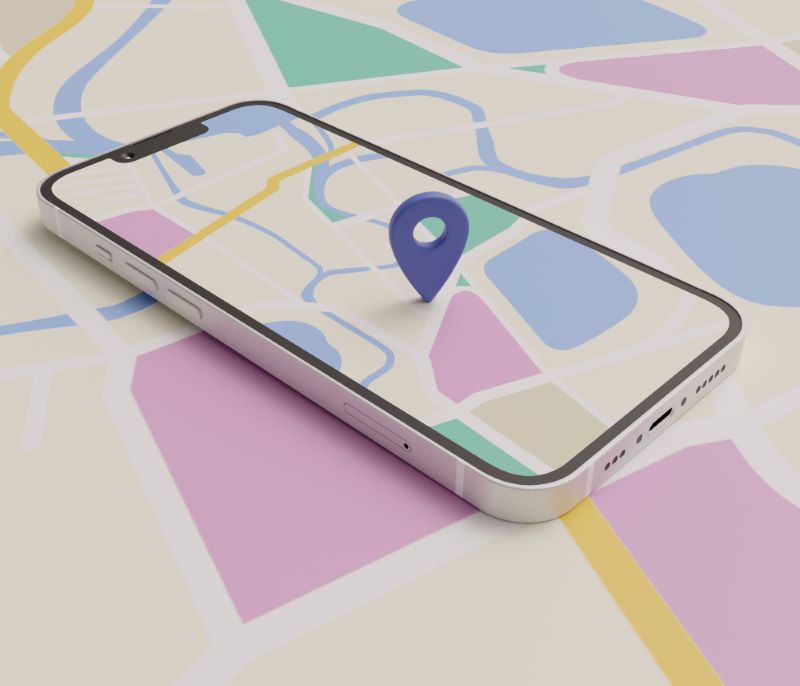How To Use Location Data To Better Meet Consumer Needs
Connectedness. That is the word in the world of digital living. As technology advances, the world gets smaller. The internet has joined us all together, for better or worse. According to a report by statista.com, about 50 billion devices will be connected to the internet by 2020. As we are already in 2021, that means people are connected worldwide from about 50 billion points, give or take a few billion. As a business owner, this is good news for you. It means that more data on your consumers are becoming available as they take more and more of their daily activities onto the net. One of the most useful and increasingly available types of data is location data.
Your consumers are practically walking around with a tracking device on them: their cell phones. These cell phones have GPS and Wi-Fi chips that combine with network carrier service to create a digital footprint on the internet. These cell phones also carry applications that steadily collect a stream of location data. This geospatial data can tell you a lot about how your consumers live, what they do and help you inform your marketing strategy for more effective marketing.
In this article, we’ll delve into the complexities of location data and how you can collect it to inform your marketing, sales, and overall business strategies. Feel free to skip ahead with the table of contents below if you already have a grasp on what location data is.
Table of Contents
2. Informing Your Business Strategies With Locational Data
3. How To Integrate Location Data Into Your Marketing and Sales
What is Geospatial Data?

For the sake of clarity, let’s define what constitutes location data with some precision. Location data is also referred to as geospatial data or geolocation data. Like I said earlier, all mobile phones come equipped with a GPS chip. This chip uses satellite data to fix the exact location of the phone at all times. Now, most smartphones (if not all) also come with a Wi-Fi chip. And every time this Wi-Fi chip comes across another Wi-Fi network, it pings off of it, creating another location datastream.
Also, these cell phones are continually pinging off service towers of network carriers. Since these towers have a fixed position, this serves as another source of location data on the cell phone. All these data sources are what come together to create a constant stream of location data that serves as your digital footprint, highlighting your movements day after day. Now, let us take a look at how you can inform general business strategies with geolocation data.
Informing Your Business Strategies With Locational Data

As a business owner, you can never have too much data about your consumers. The more you know about them, the better you can tailor your business strategy to perfectly meet their needs. Even better if you can analyze customer data as a group to identify common trends. Location data is one of the easiest ways to track group behavior among your consumers.
If 60% of your consumers tend to congregate at a particular spot, then you should probably think about putting up a billboard at that spot. If a high percentage of your consumers attend the movies on weekends, then you should probably look into partnering with cinemas to show your ads. Anyhow you look at it, location data brings you closer to your consumers than ever before. Every single point on the location data stream represents a potential opportunity to learn more about your consumers. Also, location data can be combined with other data types to get complete pictures of possible or already-occurred scenarios. Knowing the location where an event occurred can completely change your point of view.
For example, say you are a soil supplier about to extend your operations into a new state, say, Ohio. Now, you already collected data on the number of farmers in the state and the number of farmers that use organic fertilizer instead of chemical fertilizers. So you already decided to focus your efforts on those already using chemical fertilizers. However, geospatial data might show you that the farmers using organic fertilizer live in an area where there is no easily accessible road, which is why they can’t access chemical fertilizers. So, if you can devise a means of getting the fertilizers to them, you have an entire market of framers that are only buying fertilizers from you. This is an example of how much perspective location data can bring to your business strategies.
How to Integrate Location Data into Your Marketing and Sales

One of the more significant problems that marketers face is how to meet consumers at their point of need rather than trying to bring them to you. Location data can help solve this problem. If you know where your consumers are going to be or where they are to be found regularly, then it becomes relatively easy to bring your offers to them right there. Like our fertilizer supplier above, location data reveals many insights that, in combination with other types of data, can help you sell your product or service better than ever. One of the ways you can use geolocation data for marketing purposes is with geofencing marketing.
What is geofencing marketing?
As the name suggests, geofencing marketing means building a virtual geographic fence or boundary around your business that allows you to send targeted messages for offers and promotions when your consumers pass through. With a technique known as geo-conquesting, you claim this piece of virtual geography as your territory. Every time your consumers pass through, it sends them a message that they are now passing near Joe’s Home of Flowers and should make a booking for flowers for valentine’s or something similar.
Geofencing marketing allows you to build an automated system to utilize location data using a GPS and a BlueTooth device or a radio frequency identifier (RFI).
One other way to integrate location data into your marketing strategies is by using location-based applications. Location-based applications use their access to a phone’s GPS data to show ads to the user. Even though the internet has connected us all, there are still several needs that are location-specific. These applications use a mobile phone’s location data to display ads corresponding to the user’s location. For example, if the user is at a football game, the app might display an ad for a betting site. This takes us back to the need to meet consumers at their point of need. A person who likes to bet is more likely to stake a bet while at a football game than at any other random time.
Several more use-cases exist to help integrate locational data into your marketing, sales, and overall business strategies. All of them serve to make your consumers more accessible to you and generate a complete picture of how data translates to usable information.
The Future of GPS Data Collection

One major obstacle that lies with the use of geolocation data is privacy. The more connected the world becomes, the more people become paranoid about their privacy (with good reason). The primary source of location data comes from apps that collect the data directly from users’ cell phones, anonymize it, and then sell it. Previously, many of these companies collected data without users’ permission and just sold it to the highest bidders. However, this raised a lot of privacy concerns and calls for regulation. This lead to the passing of the General Data Protection Regulation by the European Union in May 2018, in an attempt to curb the invasion of privacy by companies. The regulation required internet companies to explicitly ask for permission before collecting user data.
However, it would take a lot to completely identify all the different ways location data is being collected and used. Therefore, consumers might have to adapt to a new way of life where companies sell what they need to them based on where they are. We already live at the junction of consumerism and surveillance, and all it would take is a little push to cross the line. As a business owner, you should strive to respect your consumers’ privacy as much as possible. However, you can also strive to meet them at the intersection of their needs and give them what they want when they want it.
A New Way To Collect Geolocation Data

For consumers, the future of compliance and data security might lie in the ability to choose who you’d like to share your data with and the kind of data you’d like to share. As a business owner, however, the future of GPS data collection rests with a technique called web scraping. Web scraping uses bots known as crawlers to parse through the internet and collect data according to some preset parameters. The scraping bot downloads the data into a CSV file for ease of use.
One of the reasons why web scraping is such a perfect technique for GPS data collection is the ability to specify just what kind of data you want to collect. Scraping Robot uses API technology which allows you to collect data in real-time. This is especially perfect for collecting geolocation data which is always changing. We also make use of multiple proxies to allow you to collect data from multiple sources at once. To get started, all you have to do is send a message to our developers telling them what you need and they will get started building your own customer scraping solution. Alternatively, you can try out our pre-built modules for some DIY scraping experience. You’ll get 5000 free scrapes when you sign up and every scrape after that costs only $0.0018.
Conclusion

Due to the concerns surrounding privacy violations, scraping location data has a bit of taboo attached to it. However, with the aid of a well-designed scraping service like Scraping Robot, you can easily integrate geolocation data into your business strategies without crossing the boundary into privacy violation. Try out our service today and get an idea of just how easy it is to scrape the data you need.
The information contained within this article, including information posted by official staff, guest-submitted material, message board postings, or other third-party material is presented solely for the purposes of education and furtherance of the knowledge of the reader. All trademarks used in this publication are hereby acknowledged as the property of their respective owners.
